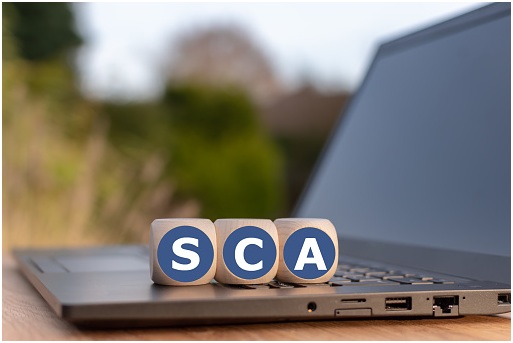Strong Customer Authentication (SCA) is a critical condition that all online sellers dealing with consumers or businesses inside the European Economic Area must meet. It is a part of the EU’s updated Payment Services Directive (PSD2). The intention behind this obligation is to step up online payment security measures so that more consumers feel confident about making online purchases.
According to recent reports, over 50% of consumers still believe online payments to be less secure than cash payments. Hence, companies and vendors who sell online need to convince their customers about data and payment security. Abiding by SCA offers the perfect opportunity for vendors to provide their customers with smooth and more secure online shopping/payment experiences.
Understanding SCA – Why Is ItAn Opportunity?
SCA was included in the PSD2 directives to meet ‘card not present’ payment issues. In the past, hackers could steal online shoppers’ credit card information and use the data to make fraudulent purchases. These instances severely discouraged key e-commerce players, as both customers and sellers had to suffer.
SCA requires issuing banks to confirm transactions using more strict authentication processes. Previously, a 3D Secure protocol was recommended in the PSD1 directives. This protocol compelled issuing banks to carry out two-step verification processes. But, 3DS1 was established before smartphones became popular. For vendors who relied on orders made on mobile phones, 3DS1 became a “conversion killer.” The process of verifying transactions was full of friction. These frictions led to order cancellations and other complications.
3DS2 is designed to cut down these frictions, particularly for mobile payments. Online vendors who use the 3DS2 protocols can now maintain high conversion rates while still offering optimum payment security to their customers.
SCA protocols will add additional firewalls for shoppers to cross through when making digital payments. As per SCA requirements, to complete their online orders, customers must provide two of these three details –
- Biometrics (fingerprints, retina scans, etc.)
- Something the customer possesses (e.g., a mobile phone number)
- Something that only the acquirer knows (e.g., a PIN code)
Will these extra-complex authentication processes harm customers? No! They will benefit customers. The simple way of providing passwords has failed in the past. With SCA, the number of illegitimate orders will decrease.
For online sellers, these extra-complex authentication processes may result in increased cart abandonment. What if a customer loses his patience during these multi-faceted authentication processes? While these concerns are legitimate, there are also many positives for sellers who oblige by the SCA requirements.
Benefits for Vendors
No Chargeback Liability -Adopting the 3DS2 verification process will shift liability for chargebacks from vendors to the issuing banks. Once a vendor obliges by SCA requirements, he or she has no more responsibility for chargebacks. They’ve played their part to ensure there’s no fraud. Any future liability or chargeback disputes will be dealt with by the issuing bank.
- Positive Business Strategy – Instead of viewing SCA as a hassle, vendors can see it as a chance to provide more reliable and more secure checkout experiences. Since 3DS2 has paved the way for mobile-friendly authentication steps, SCA-compliant vendors will also receive more mobile phone orders.
- No More Authentication Charges – In the past, issuers used to charge vendors for authenticating each transaction. SCA-compliant vendors can avoid these pointless authentication expenses.
- Qualify for Exemptions – Not all online transactions are subject to SCA requirements. Some low-risk transactions can be exempted to guarantee frictionless checkouts.
Only vendors who abide by the 3DS2 protocols can request for these exemptions. Some of these exemptions include –
- Orders below €30
- Merchant transactions
- Low-risk transactions
- If one of the two parties aren’t inside the European Economic Area, SCA rules may not apply.
Providing Smoother Checkouts
Strong Customer Authentication (SCA) -compliant vendors can provide secure and smooth checkout experiences. To take advantage of SCA exemption and reduce transaction frictions without putting customers at risk, vendors must invest in strong customer authentication solutions. Numerous software tools automatize the transaction process while keeping the vendor SCA-compliant. These tools –
- Optimize Exemptions – The system consistently identifies transactions that qualify for an exemption. Then, appropriate 3DS2 measures are undertaken to secure the transactions.
- Offer Fraud Prevention – SCA software tools adapt to popular fraud trends to help vendors ensure their transactions are protected at all times. But, doesn’t SCA eliminate the need for vendors to invest in fraud prevention measures? No! SCA will only make scammers work harder. They may specifically target exempted transactions. So, screening these exempt transactions for fraud is still as important. SCA software tools assess each transaction (exemption or no exemption) to detect fraud. By using these tools, vendors can offer their buyers and their business an added layer of security.
- Faster Transactions – SCA is set to decrease consumer tolerance for poor checkouts. That’s bad news for vendors as 52%of online shoppers who abandon purchases from one vendor go on to complete it with a competing vendor.
Hence, for vendors, investing in software tools that facilitate Strong Customer Authentication compliance, identify transactions that qualify for exemptions, and deliver frictionless checkout experiences is vital. By doing so, vendors can finally make the most of the SCA requirements.












